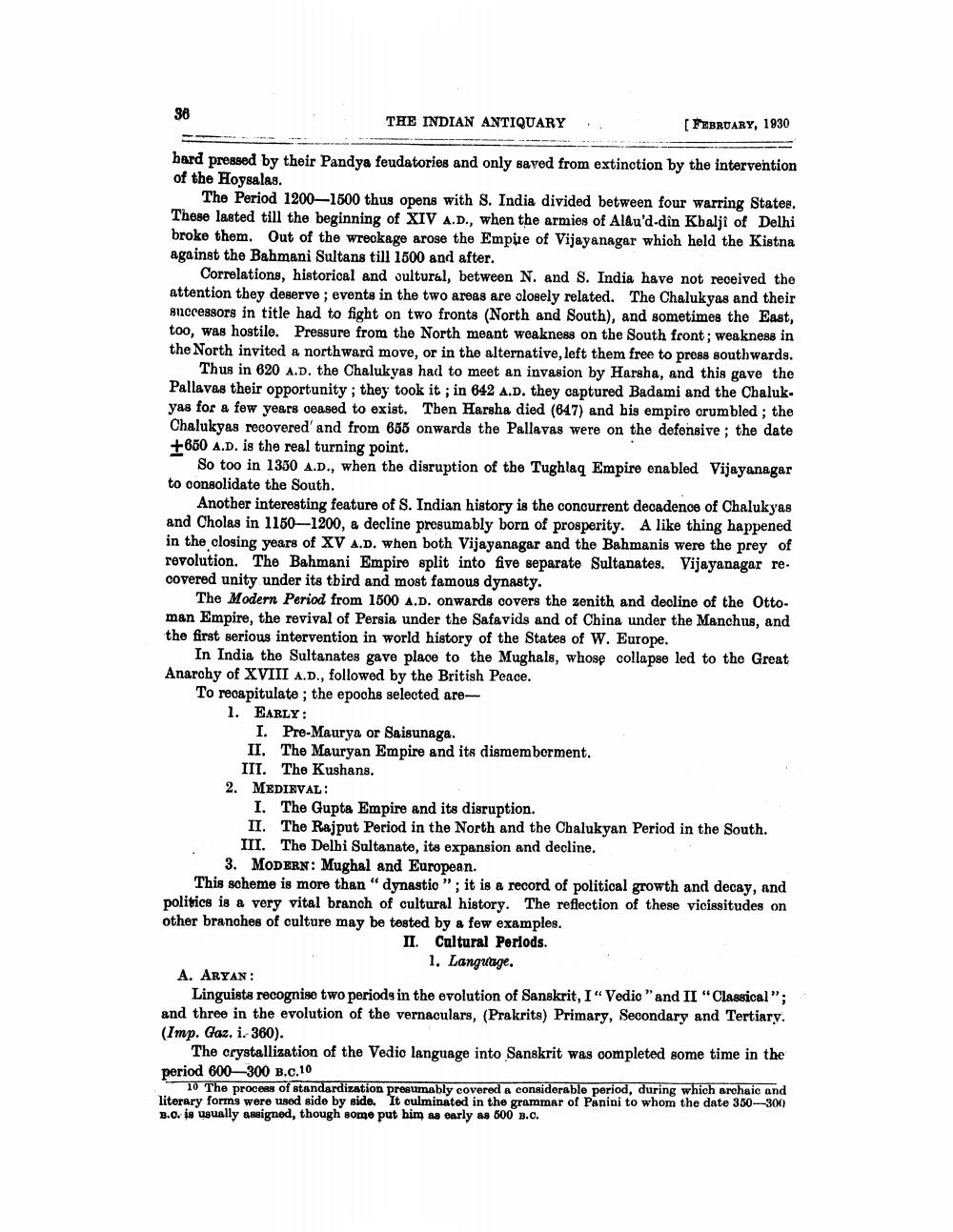________________
38
THE INDIAN ANTIQUARY
[ FEBRUARY, 1930
bard pressed by their Pandya feudatories and only saved from extinction by the intervention of the Hoysalas.
The Period 1200-1500 thus opens with S. India divided between four warring States. These lasted till the beginning of XIV A.D., when the armies of Alau'd-din Khalji of Delhi broke them. Out of the wreckage arose the Empire of Vijayanagar which held the Kistna against the Bahmani Sultans till 1500 and after.
Correlations, historical and cultural, between N. and S. India have not received the attention they deserve ; events in the two areas are closely related. The Chalukyas and their successors in title had to fight on two fronts (North and South), and sometimes the East, too, was hostile. Pressure from the North meant weakness on the South front; weakness in the North invited a northward move, or in the alternative, left them free to press southwards.
Thus in 620 A.D. the Chalukyas had to meet an invasion by Harsha, and this gave the Pallaves their opportunity; they took it ; in 642 A.D. they captured Badami and the Chaluk. yas for a few years ceased to exist. Then Harsha died (647) and his empire crumbled; the Chalukyas recovered' and from 650 onwards the Pallavas were on the defensive; the date +650 A.D. is the real turning point.
So too in 1350 A.D., when the disruption of the Tughlaq Empire enabled Vijayanagar to consolidate the South.
Another interesting feature of S. Indian history is the concurrent decadence of Chalukyas and Cholas in 1150-1200, a decline presumably born of prosperity. A like thing happened in the closing years of XV A.D. when both Vijayanagar and the Bahmanis were the prey of revolution. The Bahmani Empire split into five separate Sultanates. Vijayanagar re. covered unity under its third and most famous dynasty.
The Modern Period from 1500 A.D. onwards covers the zenith and decline of the Ottoman Empire, the revival of Persia under the Safavids and of China under the Manchus, and the first serious intervention in world history of the States of W. Europe.
In India the Sultanates gave place to the Mughals, whose collapse led to the Great Anarchy of XVIII A.D., followed by the British Peace. To recapitulate ; the epochs selected are1. EARLY:
I. Pre-Maurya or Saisunaga. II. The Mauryan Empire and its dismemberment. III. The Kushans. 2. MEDIEVAL:
I. The Gupta Empire and its disruption. II. The Rajput Period in the North and the Chalukyan Period in the South. III. The Delhi Sultanate, its expansion and decline.
3. MODERN: Mughal and European. This scheme is more than "dynastic "; it is a record of political growth and decay, and politics is a very vital branch of cultural history. The reflection of these vicissitudes on other branches of culture may be tested by a few examples.
II. Cultural Periods.
1. Language. A. ARYAN:
Linguists recognise two periods in the evolution of Sanskrit, I" Vedio"and II "Classical"; and three in the evolution of the vernaculars, (Prakrits) Primary, Secondary and Tertiary. (Imp. Gaz. i. 360).
The crystallization of the Vedic language into Sanskrit was completed some time in the period 600—300 B.C.10
10 The process of standardization presumably covered a considerable period, during which archaic and literary forms were used side by side. It culminated in the grammar of Panini to whom the date 350-300 B.O. is usually assigned, though some put him as early as 500 B.C.




